The content of this article is sourced from 42how and has been translated by ChatGPT
Overview
In July 2021, Jidu Auto was founded in Zhejiang. Discussions about the Jidu 001 have been ongoing since its launch.
Despite the fact that Jidu 001 deliveries started in October and sightings on the road have become increasingly common, the test drive event still aroused curiosity. Not only is Jidu’s ruggedized vehicle positioning relatively rare in the new energy vehicle market, but I am also curious about what kind of answer a car brand established only half a year ago can deliver.
This event was the first large-scale media test drive of the Jidu 001 production model, and Jidu confidently arranged for track, gymkhana, and road test drives. Will the Jidu 001’s track performance exceed expectations, which are focused on comfort?
Driven by curiosity, I entered the Xiamen International Circuit.
Track Performance is Lacking in Passion
The Xiamen International Circuit is 1.81 km long. Although the circuit is not large, its elevation difference is 11 meters, and it includes 11 curves such as U-shaped and S-shaped curves. The driving rhythm will be very compact.
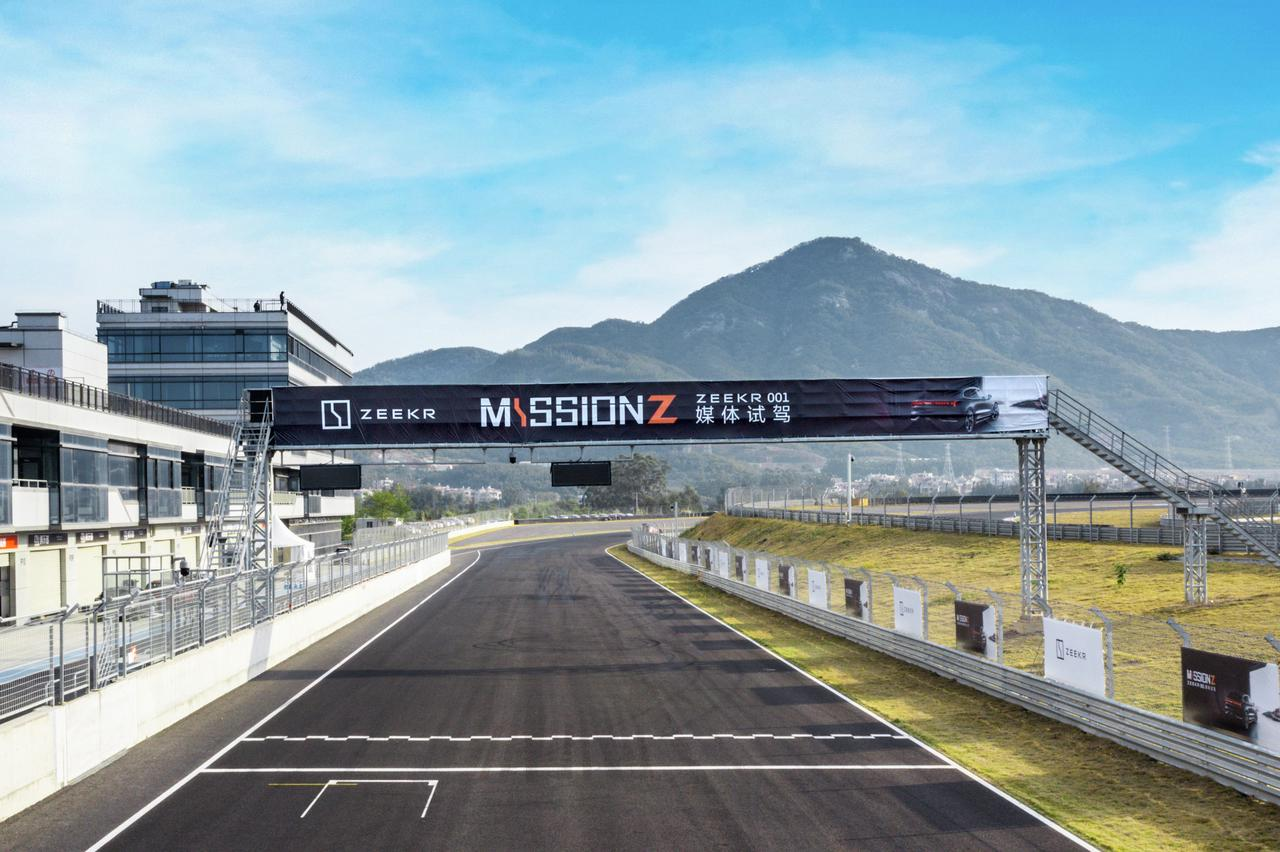
The significant elevation differences will test the vehicle’s mid-acceleration capability and maximum braking performance, while the extremely dense curves will test vehicle’s dynamic performance during sudden weight transfer. The track experience consists of four laps, with the first lap as a teaching lap, the middle two laps as a flying lap, and the final lap as a cooling-down lap.
The vehicle driven on the track is the ultra-long-range YOU model with a price of 368,000 yuan, which has front and rear dual motors and four-wheel drive, and maximum power output of 400 kW and maximum torque of 768 n·m. In terms of absolute acceleration and braking performance, the Jidu 001’s 3.8 seconds 0-100 km/h acceleration and 34.5 meters of 0-100 km/h braking distance are impressive. However, it should be noted that this top-of-the-line model is equipped with a 100 kWh battery pack and has a curb weight close to 2.4 tons. Driving such a behemoth on the track made me nervous, as the enormous size of the vehicle is a significant test for the brakes and suspension on the track.
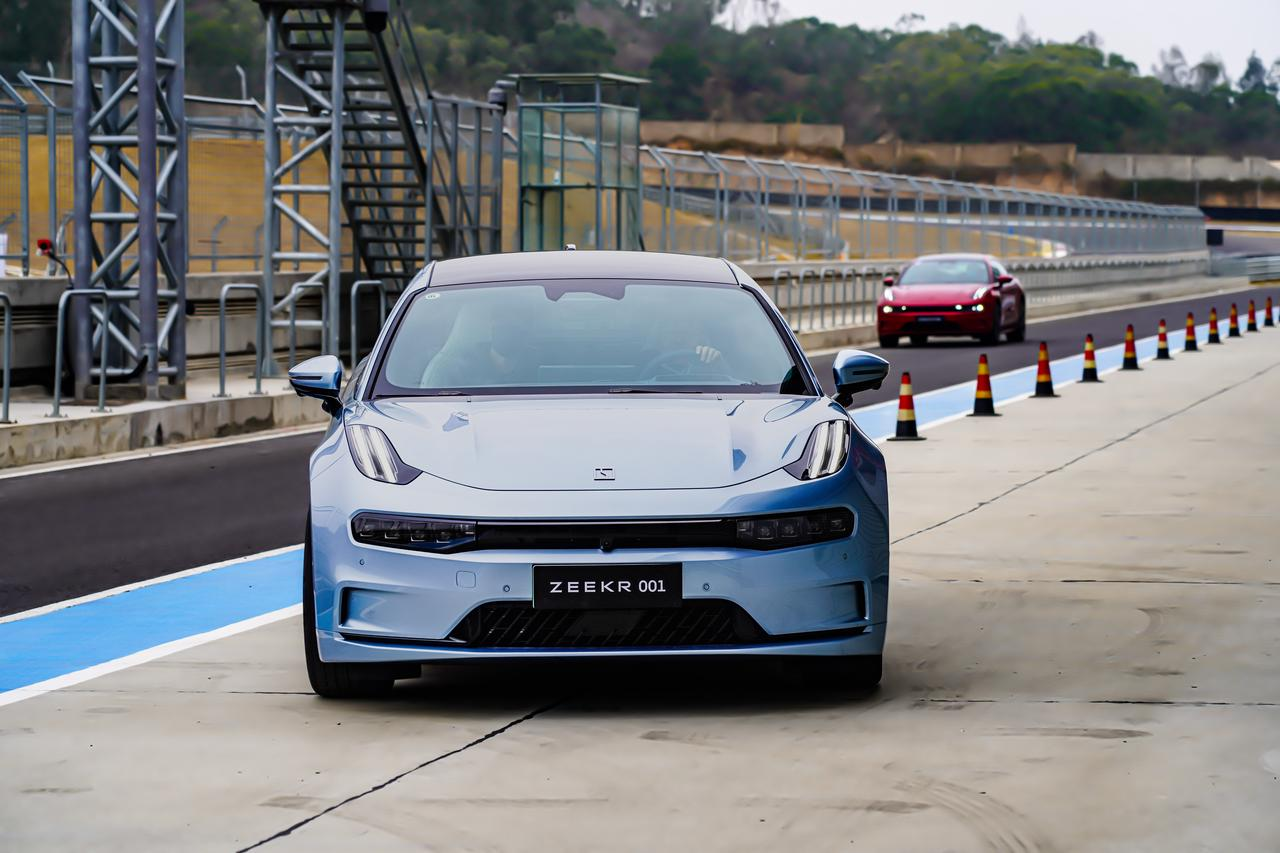
What’s worse is that I was assigned to the third group to start, and this vehicle had already been thrashed by other media for two laps before my turn. When I stepped on the accelerator to start, the sudden acceleration of the electric vehicle was expected, but because the Jidu 001’s suspension tends towards comfort, even though the vehicle is equipped with an air suspension and the height is lowered to the lowest, the vehicle will still rush out like a cannonball with its head lifted up when it is at full acceleration, which is even more obvious from the outside of the vehicle.
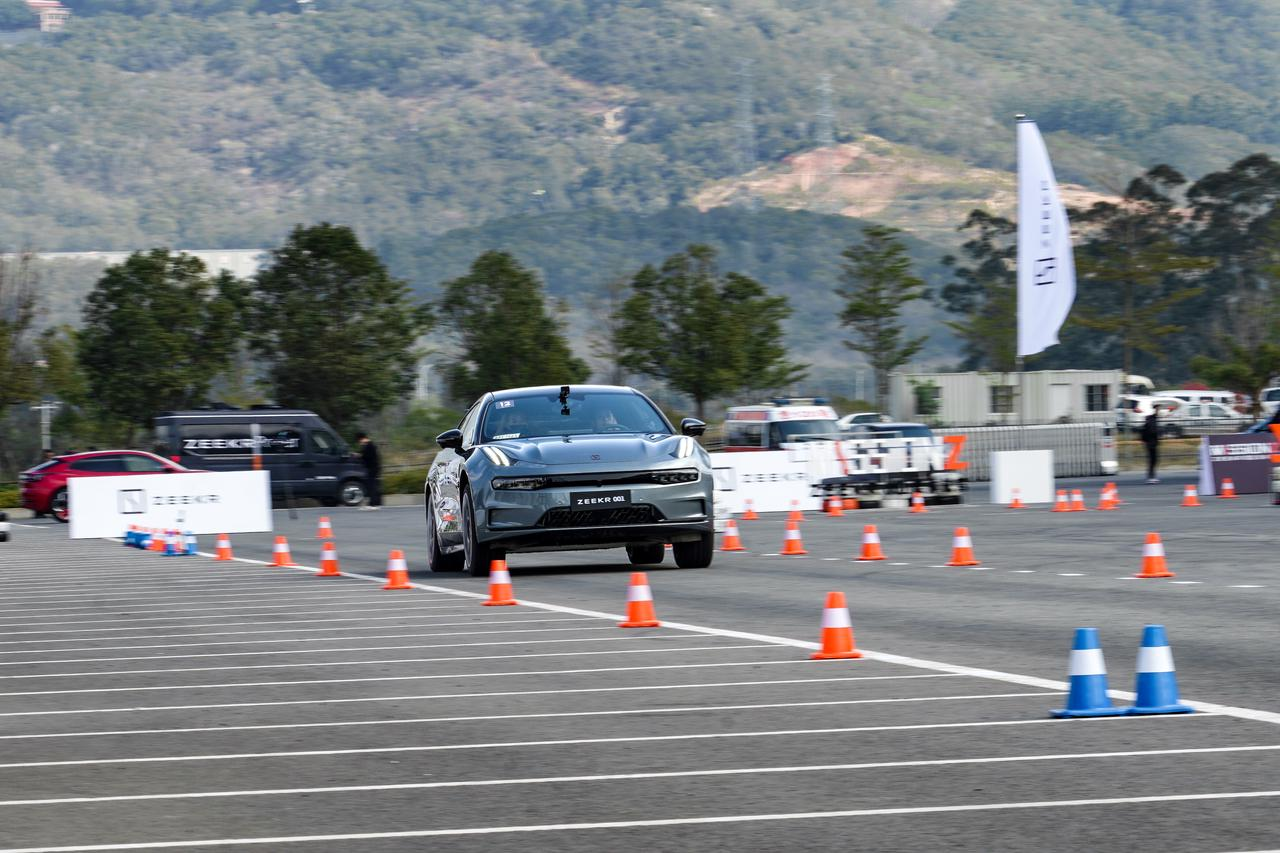 In the undulating track, the comfort-oriented chassis tuning of the Xpeng P7 cannot maintain the “railway car” stability of a performance car. Noticeable leaning can be felt in corners, and the vehicle’s dynamic response is not sensitive enough when facing continuous turns, which is a negative effect of the suspension’s comfort-oriented calibration.
In the undulating track, the comfort-oriented chassis tuning of the Xpeng P7 cannot maintain the “railway car” stability of a performance car. Noticeable leaning can be felt in corners, and the vehicle’s dynamic response is not sensitive enough when facing continuous turns, which is a negative effect of the suspension’s comfort-oriented calibration.
However, the double-wishbone suspension structure and the layout of the dual-motor four-wheel drive allow the vehicle to still maintain tire grip in corners. Once the body enters the apex and completes the weight transfer, sufficient power and quick-recovery grip can reassure drivers when stepping on the accelerator. Additionally, the Bosch ESP 9.3 calibration of the Xpeng P7 is conservative, and giving gas out of a turn will cut power output. However, this can be understood from a safety perspective.
The Xpeng P7 is equipped with variable steering ratio. When the steering angle is large, a small steering ratio is provided to improve passability. When the steering angle is small, a large steering ratio is provided to improve stability. When braking into turns, holding the steering wheel at the 3 and 9 o’clock positions and turning slightly can provide enough turning angle.
After getting past the U-turn and onto the straightaway, the 400 kW dual-motor easily propels the vehicle to 130 km/h. Right as the front of the car passes the braking prompt point, a hard step on the brake with the optional four-piston calipers releases enough force, and there is very little pedal travel. Meanwhile, the brake pedal’s travel does not feel soft because of the integrated energy recovery system.
Unfortunately, the brake overheating warning appears on the dashboard before the end of the second lap of the skidpad test. However, after a few laps around the track, neither the battery nor the motor system overheating warnings appeared. The temperature control system of the Xpeng P7 is commendable.
After the track experience, there is an autocross within the facility. In the autocross, the driving path laid out with cones and barrels is more extreme than the race track. Not only are there narrow 360-degree turns, but also slalom turns and simulated “moose tests”, where every knocked-over cone or barrel adds three seconds to the time.
Since the length and width of the Xpeng P7 are 4,970 mm and 1,999 mm respectively, the vehicle must hug the outer rim in the 360-degree turns to avoid hitting cones and barrels. However, in the slalom turns and simulated “moose tests”, the suspension’s comfort orientation still slows down the vehicle’s dynamic response, and all feedback feels like it is being transmitted through a thick latex mat before reaching the driver.
In general, the performance of the Xpeng P7 GT in the race track and Jin Kan Na can be summarized as lacking passion and abundant comfort. Even if I threw it into a bend, the feedback I got was always stable. Although the dual-motor version has strong power, sports feeling cannot be created just by strong acceleration. However, obviously the racing track is not where the Xpeng P7 GT should stay at, the driving performance on daily roads is what its consumers most care about.
Abundant Comfort in City Driving
After finishing the contest with the curve, I drove the Xpeng P7 GT to the suburbs of Xiamen. The temperature was 20 degrees, the sea breeze was warm, and the palm trees cast shadows, which was very pleasant.
The test drive vehicle is the ultra-long-range single-motor WE version with a price of RMB 299,000, maximum power of 200 kW, maximum torque of 384 N·m, and acceleration of 6.9 seconds per 100 kilometers. The power performance of this version is not as explosive as the top version, but it can be easily handled in urban driving. The power is released quickly when the accelerator pedal is pressed, the steering feel is delicate and linear, and it has a decent sense of superiority.
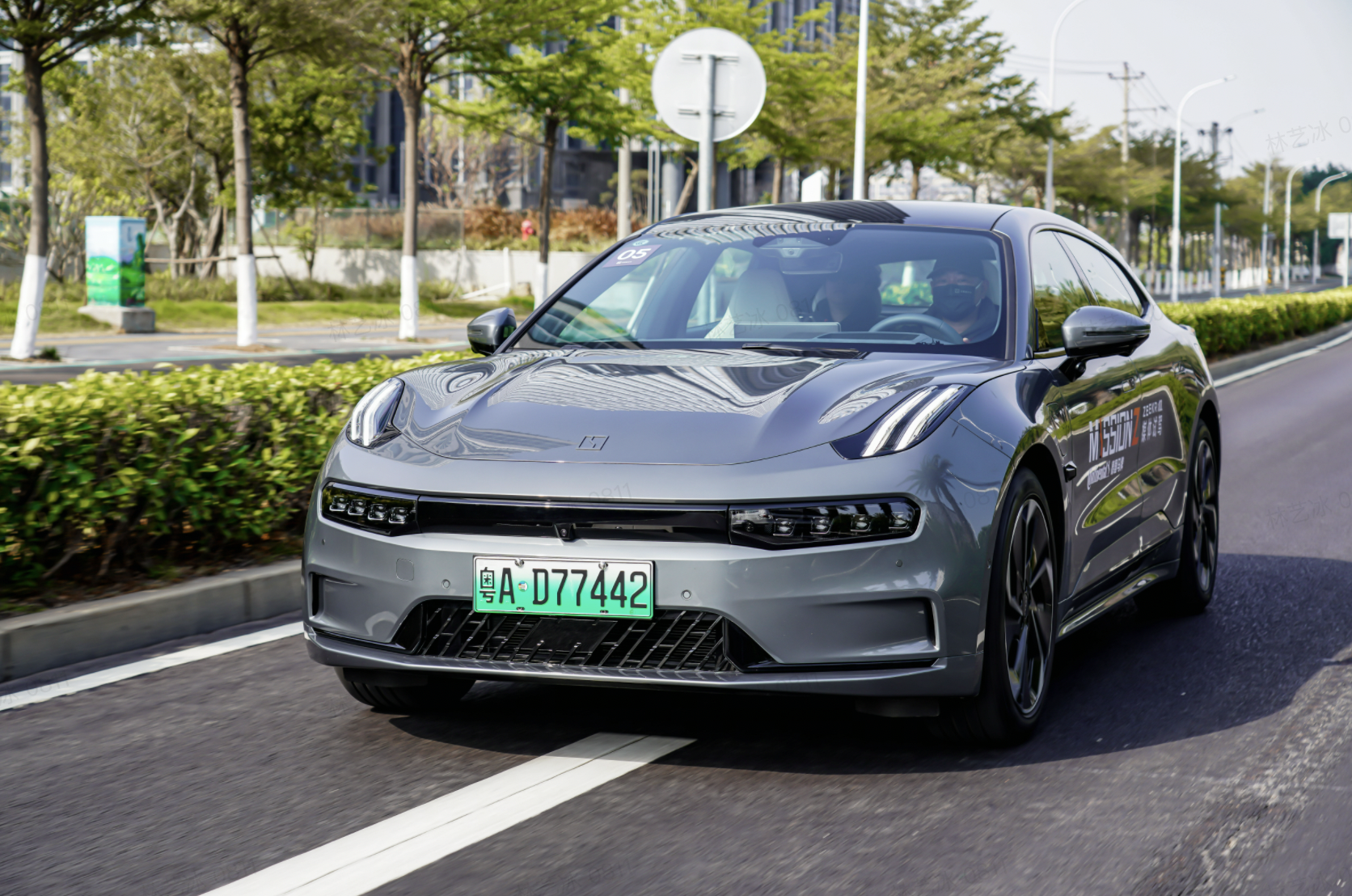
Although the Xpeng P7 GT adopts a frameless door design, the front double-layer soundproof glass, which is standard in the whole series, does play a considerable role. The interior noise is still very low at 100 km/h, without the electric current sound of the motor or the annoying wind noise. The noise coming from all around is evenly distributed, obviously the result of careful design.
The test drive vehicle on the open road did not have an air suspension, but the tuning is still comfort-oriented. Even when the speed reaches 80-100 km/h on a well-conditioned expressway and urban fast road, there is still a strong sense of isolation in the car, and most of the trivial vibrations on the road are filtered out. During the racecourse test drive, I complained that the chassis and suspension were like a latex mattress, which reduced the handling limit of the vehicle. At this moment, this drawback becomes an advantage, cruising on the road feeling as comfortable and leisurely as floating on the water.
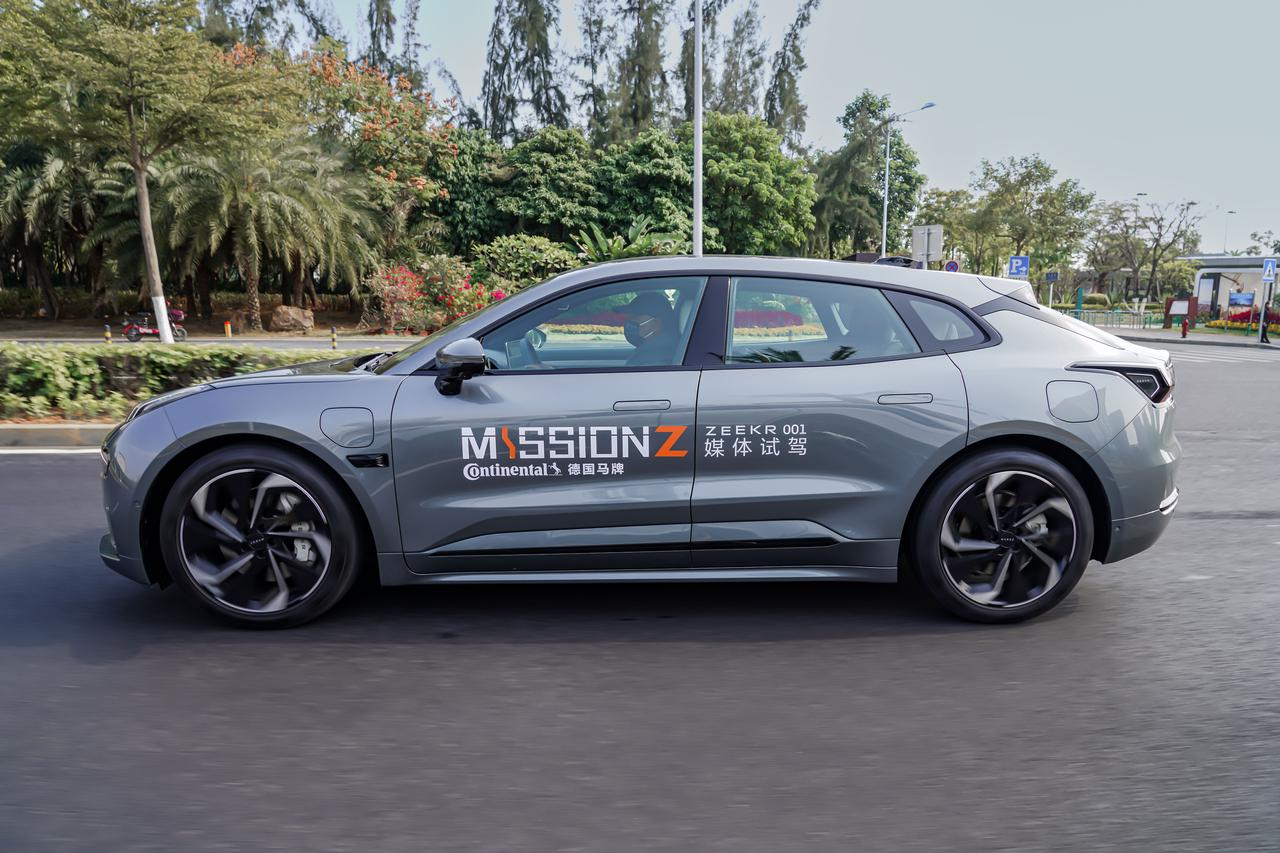
However, the Xpeng P7 GT is not so confident in dealing with large bumps. During the test drive process, there was a road under repair, and when passing through large potholes, the suspension performance was somewhat rigid, and the vertical jumping in the car became obvious, which may be related to the uneven tuning of the front and rear suspension. In order to support the over 2-tonne body, the front suspension is soft and the rear suspension is hard, which causes the performance of the vehicle in dealing with fine vibrations and large bumps to be somewhat split.The HUD effect of Geely Kiri 001 is good, it can display navigation and vehicle speed simultaneously. The brightness and font size make the information clear and easy to read. Geely Kiri has also added the function of adjusting air conditioning temperature and multimedia to this HUD. However, the contradiction lies in that it is inconvenient to operate the HUD using the touch area on the steering wheel while driving. Also, when adjusting the air conditioning temperature and multimedia information, the focus of the eyes needs to transition for 2-3 seconds, which may lead to neglecting the road conditions and potential dangers. If it is in the parked state, why don’t I directly control it on the central control screen?
Although the HUD of Geely Kiri 001 performs well, the display effect of the dashboard cannot satisfy me. Putting aside the thick black border, an 8.8-inch screen is divided into three parts. The energy consumption information on the left is located below and the font is very small. It is not intuitive to read the information while driving. The middle area provides a large space for a meaningless vehicle identification, while the remaining space is occupied by the range, with similarly small font size. In addition, the energy bar for power output and energy recovery cannot display real-time power.
All seats of Geely Kiri 001 series use leather materials with a high visual experience. But the internal filling and headrest of these seats are relatively hard, fortunately, the wrapping is good. In addition, due to the arrangement of batteries under the chassis, the floor feels slightly high, giving a slight feeling of leg suspension.
The mechanical quality of Geely Kiri 001 is at the forefront of the new forces. The linear adjustment of the accelerator and brake, the strong isolation of the chassis, and the excellent NVH performance make the hardware of Geely Kiri 001 extremely mature. However, there are still some minor problems that need to be solved, such as the rough feeling of the chassis when facing big bumps, the unintuitive design of the dashboard UI, and the relatively hard filling of the seats.
“Shooting Break”, with its elegant appearance design, is hard to ignore while resting and parking in the park. In 2006, “The Chambers Dictionary” defined “Shooting Break” as “an ancient term for a travel car.” From this, it can be seen that the functions of travel cars and shooting breaks are basically the same, but shooting breaks emphasize a more powerful engine and elegant body lines.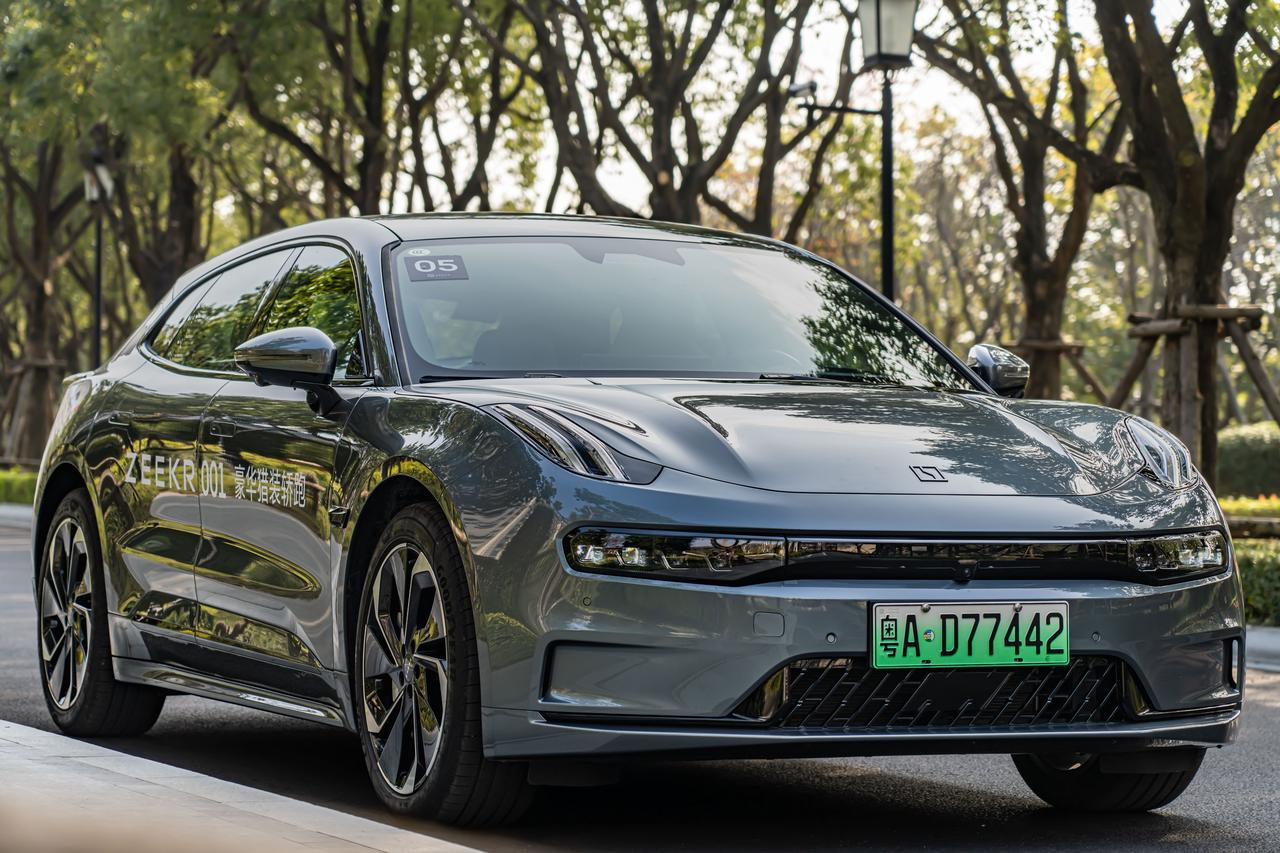
The positioning of Ji-Ke 001 is “hunting-inspired coupe”, which is a pioneering move in the current new energy market. The front face of Ji-Ke 001 is similar to that of the Lynk & Co models, lacking a sense of novelty. The unconventional split-type high and low beam headlights have been widely accepted by the public and have even formed a unique personalized style.
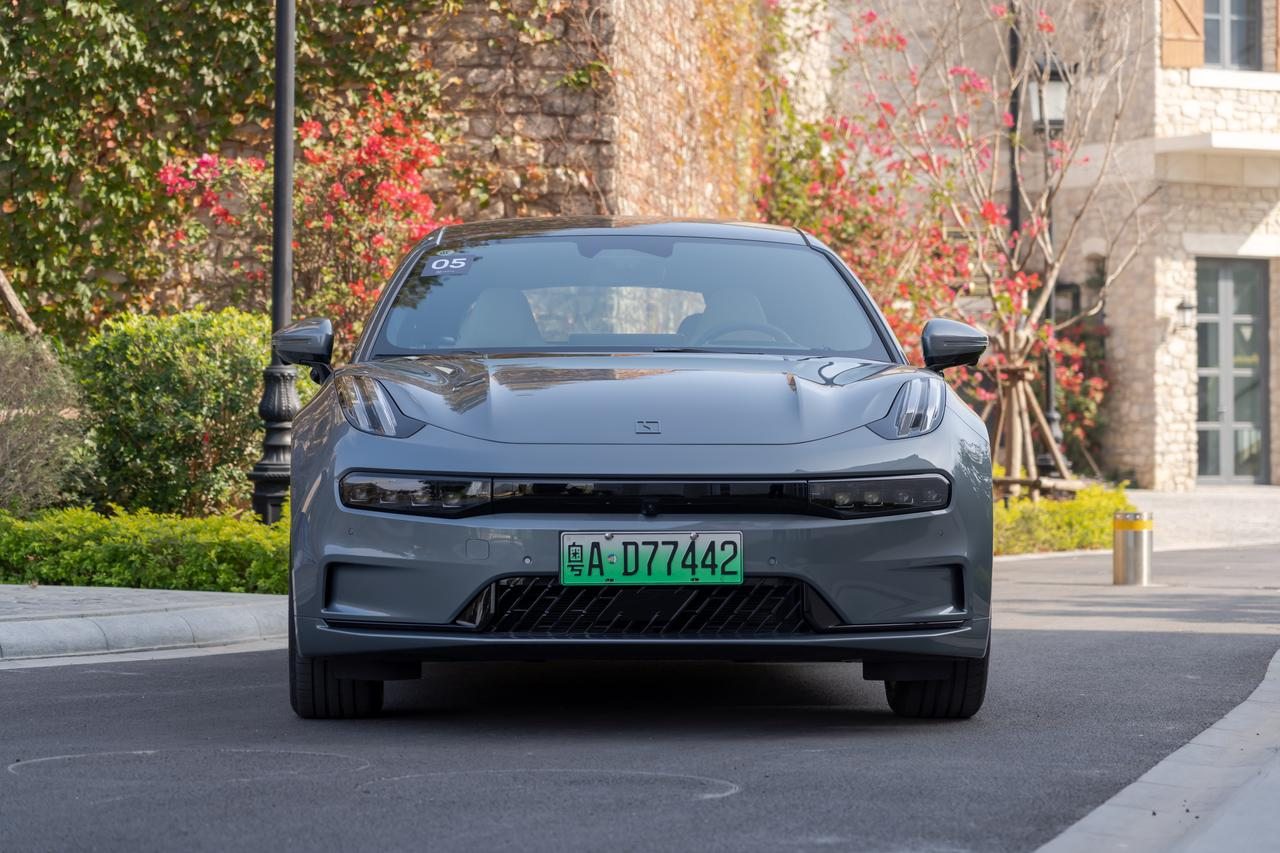
The body lines of Ji-Ke 001 are designed very well. The roof line extends downwards towards the C-pillar, making the side lines of Ji-Ke 001 more concise and sporty compared to the cumbersome lines of station wagons. The taillights also extend partially to the side of the vehicle, avoiding monotony.
The three-dimensional fold-line design on the side of the vehicle combined with good paint technology makes the silver-grey body look transparent and glossy under sunlight, with different light and shadow effects seen from different angles.
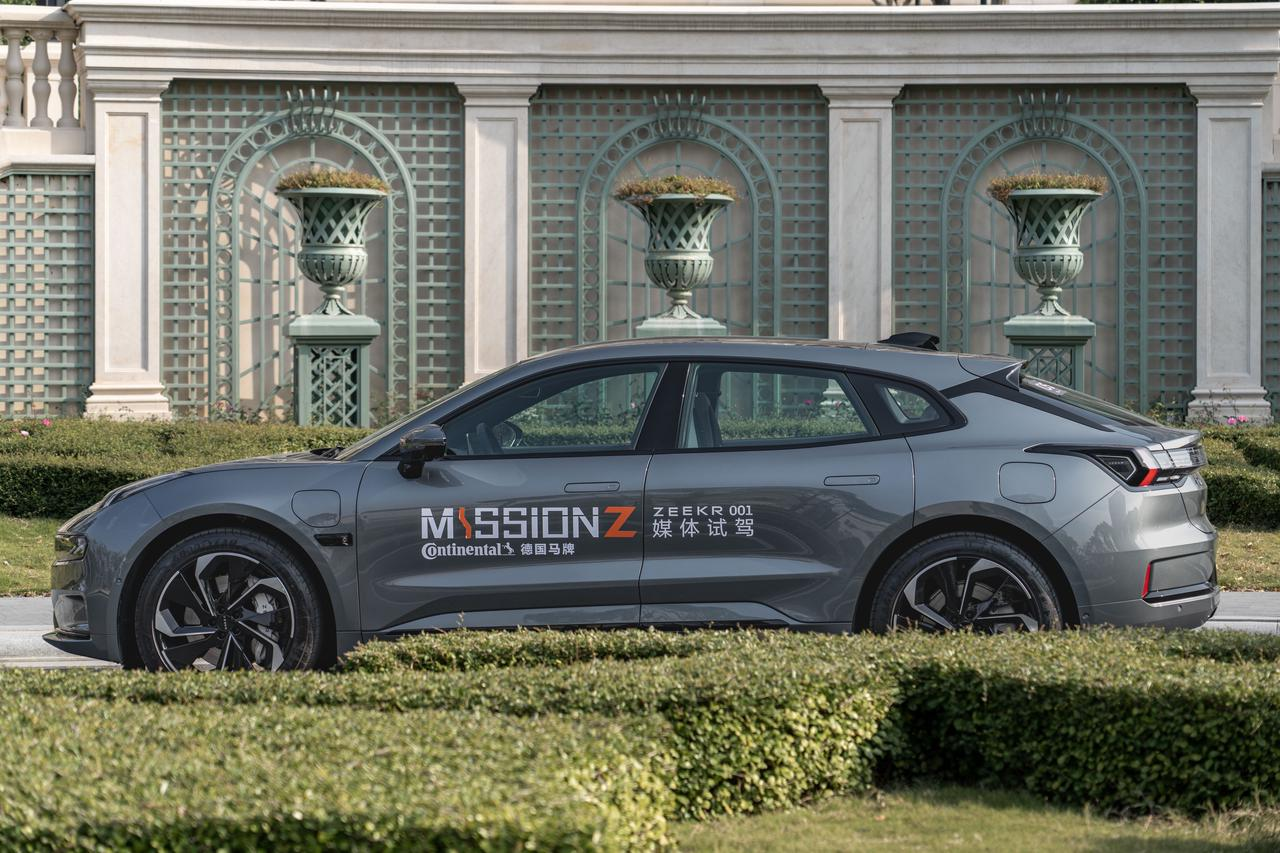
The taillight design can also be seen somewhat in the style of Lynk & Co. A LED taillight passes through the middle, while the interior of the two side lamp groups adopts individual light emitting bars, making the car highly recognizable. The spoiler on the top of the roof has a well-designed shape, with raised sides and a lowered center, making the rear look like a spacecraft, effectively solving the problem of visual monotony in the rear of the hunting car.
In addition, the rear of Ji-Ke 001 also has a rich fold-line design, with light and shadow flowing just like the side of the vehicle. The silver-grey paint matches perfectly, giving a sense of quality. However, due to the high ground clearance and the slim-top-wide-bottom design, the rear might look slightly bulky when viewed from the back.
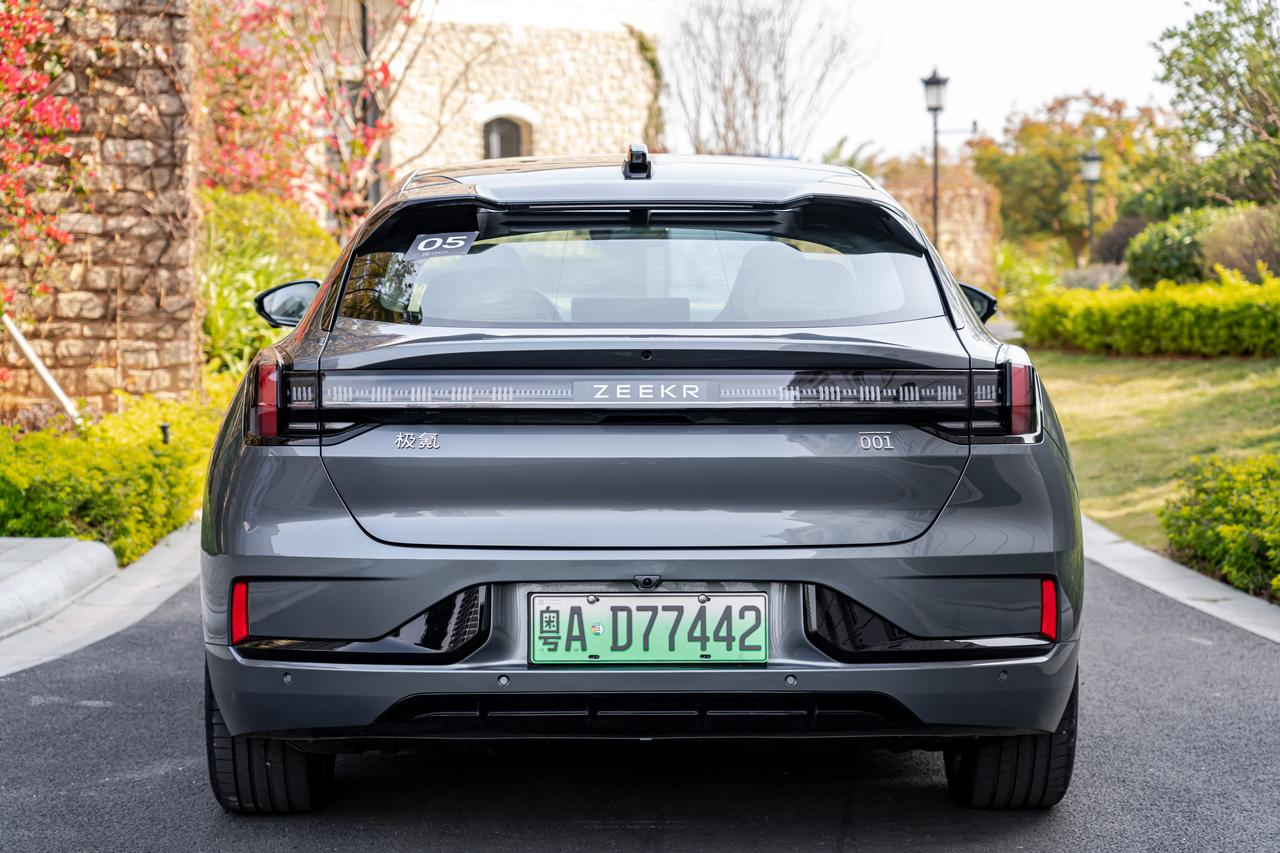
Significant Improvement in In-Vehicle System Performance
Recently, no matter what news we release about Ji-Ke, there will always be someone in the comments asking: “Does Ji-Ke’s in-vehicle system still lag?”
Stuttering, green screens, navigation failures… Ji-Ke’s in-vehicle system has changed from a highly anticipated feature at its initial release to a subject of criticism from the public. As a brand that emphasizes “technological sense” and “futuristic feeling”, a lagging in-vehicle system is out of place and has caused many prospective car buyers to switch their purchase preferences.# Update of Zeekryuan 001 Car System: From 1.0.2 to 1.0.4f
In December 2021, Zeekryuan 001 updated its car system to 1.0.4, and the latest small version is now 1.0.4f. Users need to upgrade their car system at the store. After a brief experience, I found that the experience of the 1.0.4f version of the car system is completely different from that of the earlier 1.0.2 version, which had a low level of completion. The main menu interface for controlling the air conditioning, multimedia, and seats no longer lags, but the switch and drag between interfaces still cannot achieve “smooth and responsive” performance. However, the performance of Zeekryuan 001 car system can now catch up with other brands of cars that use the same Qualcomm 820A car chip, and the serious lagging issue during voice-controlled navigation has been resolved. The performance of the four-zone microphone wake-up voice assistant is also good and accurate.

However, the Snapdragon 820A was published in 2016 and using 820A on a 2021 tech-integrated car like Zeekryuan 001 falls short. Currently, the newest car chips, such as the 8155, have been installed on various car models including: Geely Star, Roewe RX5, and Zero Run C11. It has tripled the 820A’s computing power with 3.6 million times per second.
The chip’s computing power will determine the upper limit of future upgrades, while tuning and optimization determine the lower limit of the user experience. Unfortunately, Zeekryuan had to lower the upper limit due to the lack of 8155 chips when planning the SEA vast architecture. However, it is gratifying to know that the performance of the Zeekryuan car system has finally caught up with mainstream competitors.

However, it is worth noting that the Zeekryuan 001 car system still has flaws. For example, the seat memory can only remember one driver, the 4G network connection in the car is unstable, online music only works with Kugou Music, the backup radar has delayed warnings, and the backup camera performs poorly in dark environments. These should be the focus of optimization for Zeekryuan’s next step.

Zeekryuan has stated that version 2.0 of the car system will be released in February or March. The new version of the car system will improve responsive speed, fix bugs and improve user experience.
Zeekryuan’s “Stepping Stone” and “Stumbling Block”
On February 24th, Li Shufu stated in an internal meeting that Geely intends to form a new brand to participate in the competition of the pure electric vehicle market. An Conghui will serve as CEO of Zeekryuan, while Li Shufu will be the chairman. The head of the fuel car business leading the team demonstrates the decisive transformation of Zeekryuan.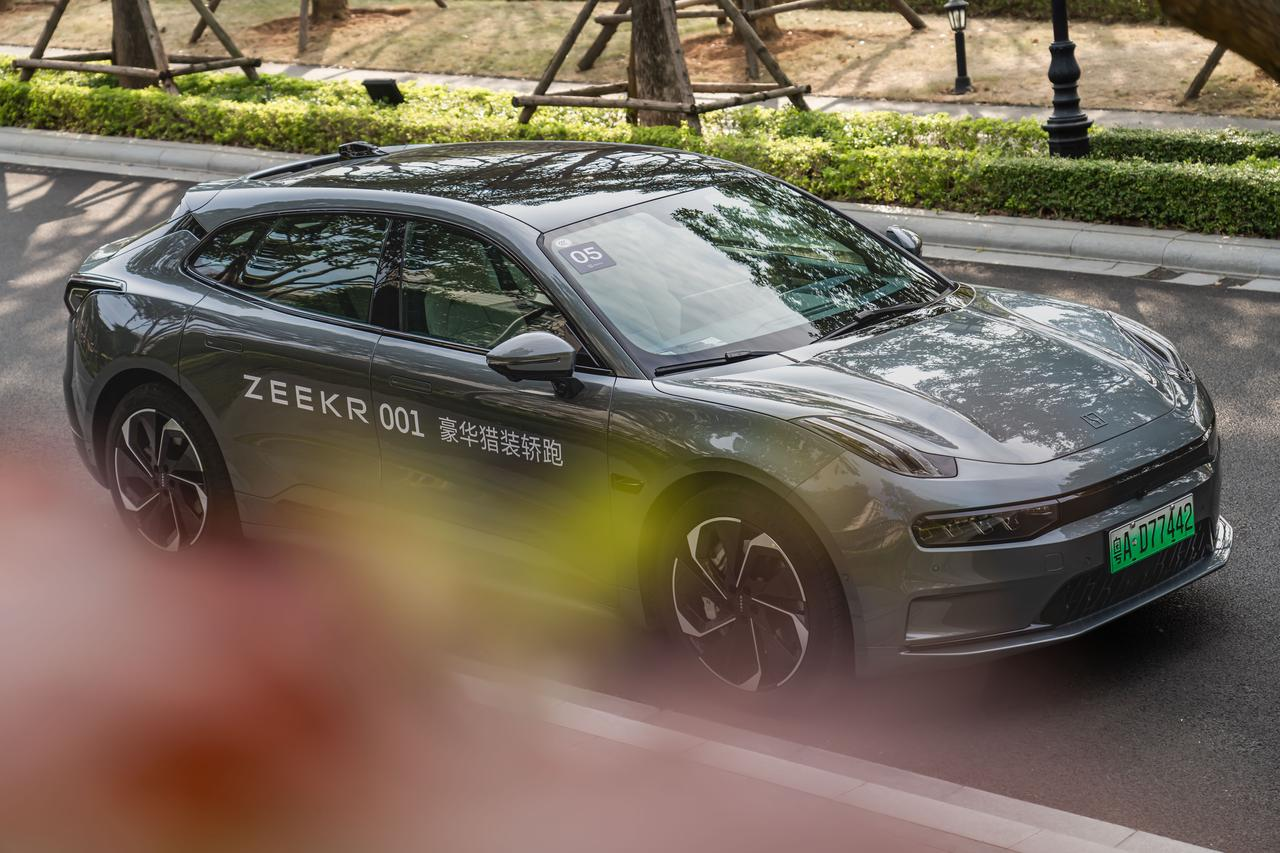
Entering 2021, Geely has unleashed in the field of intelligentization: signing strategic agreements with Tencent, establishing “Jidu” with Baidu, establishing “Fulun Motor” with Foxconn, and establishing “Smart Motor” with Mercedes-Benz. In the light and shadow, Geely expanded the scope of digital marketing, intelligent cockpit, user ecology, powertrain, three-electric technology, and autonomous driving solutions. These are all “stepping stones” for Jikr to grow rapidly.
Although the entry time is not early, Jikr is still considered to be “born with a golden spoon” with the relevant layouts of Geely and Volvo behind it. The benefits brought about are obvious: the craftsmanship, driving quality, and mechanical quality of Jikr 001 have outstanding performance in this price range, and the maturity of the exterior design and the creation of luxurious interior feel are also remarkably outstanding.
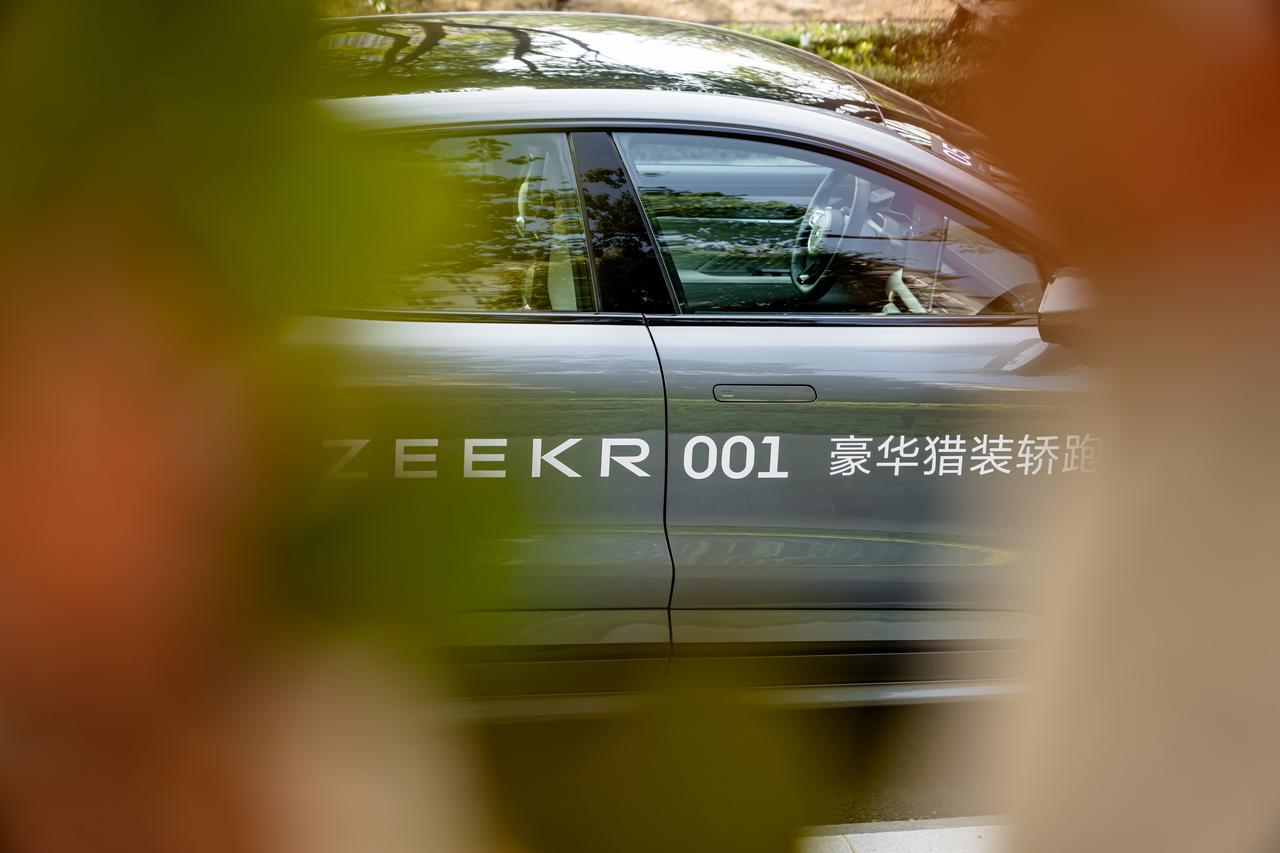
However, Jikr 001 has been in constant controversy since its release. First of all, there are issues such as rear privacy glass, panoramic sunroof, and front passenger seat ventilation, which are suspected of “standard equipment becoming optional” due to promotional issues. In addition, the 800 V charging in the SEA architecture propaganda becomes 400 V in Jikr 001. Moreover, the issue with motor torque not matching the reality and the change of motor supplier from Japanese Denso to Denso and WISR also brought disputes.
Some of these questions are due to misunderstandings of users, and some are due to Jikr’s lack of cohesive propaganda. Although Jikr claims to be a “user-oriented automotive company,” it is evident from these issues that Geely, as a traditional car company, has not completely adapted to the rules and changes in the new energy market with regard to consumer operations and marketing strategies.
In addition, currently, the assisted driving functions of Jikr 001 have not yet been pushed out. Even the most basic ACC and cruise control functions are still missing, and Jikr officials have not given a specific push time. Previously, the goal of “personal vehicles based on the SEA architecture will achieve highly automatic driving on structured roads in 2021” was not achieved on schedule.
Furthermore, limited by production capacity, Jikr’s delivery volume in December 2021 was 3,796 units. According to some booked users’ feedback, the delivery time for major purchasers has been pushed back to May 2022, and the long wait time for cars is also an essential factor affecting cars owner’s buying decisions.
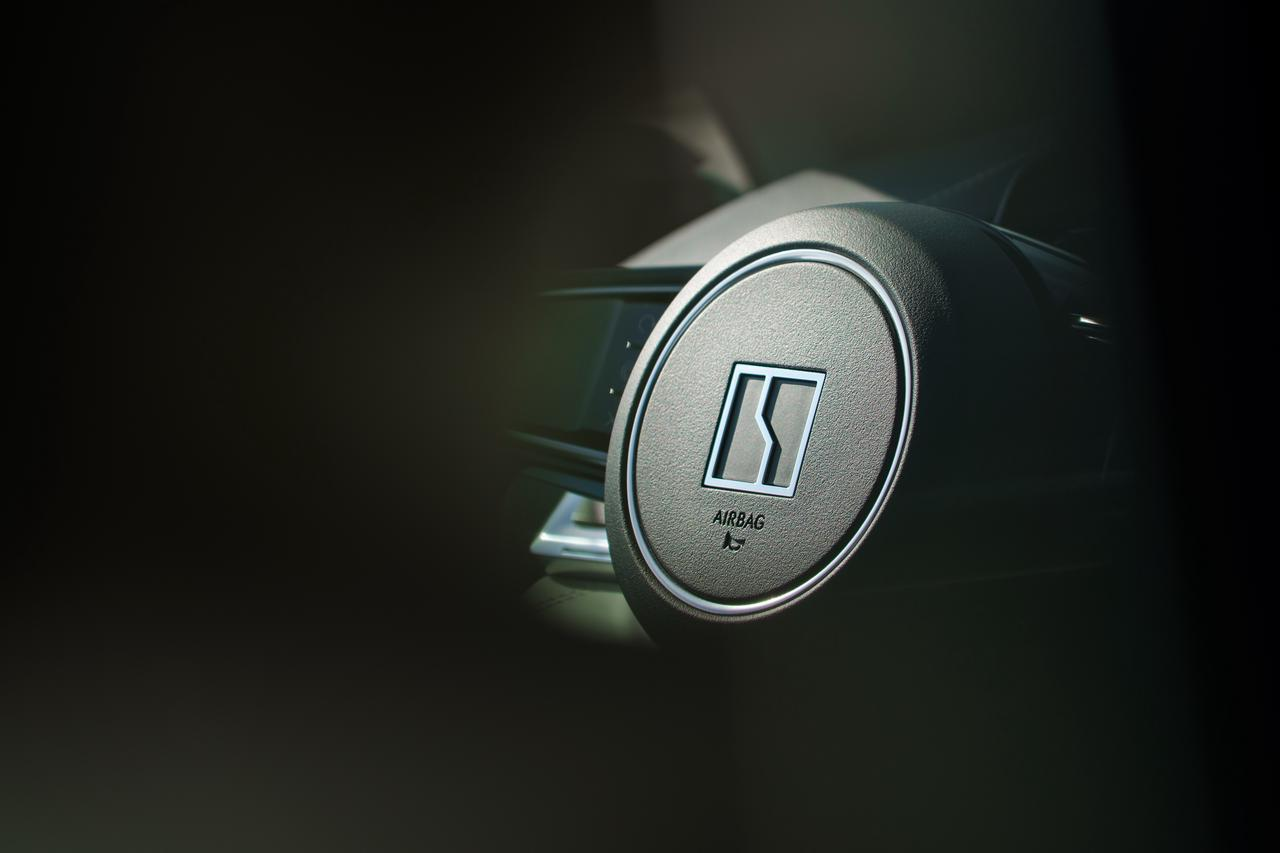
China’s new energy market has become increasingly homogeneous, and outstanding exterior and interior luxury and mechanical quality are not enough to constitute absolute competitiveness. Consumers’ focus is also beginning to shift toward auxiliary driving capabilities and cabin intelligence. From the current time point of view, Jikr’s shortcoming in intelligence may be the most significant obstacle to its “upward breakthrough.”
